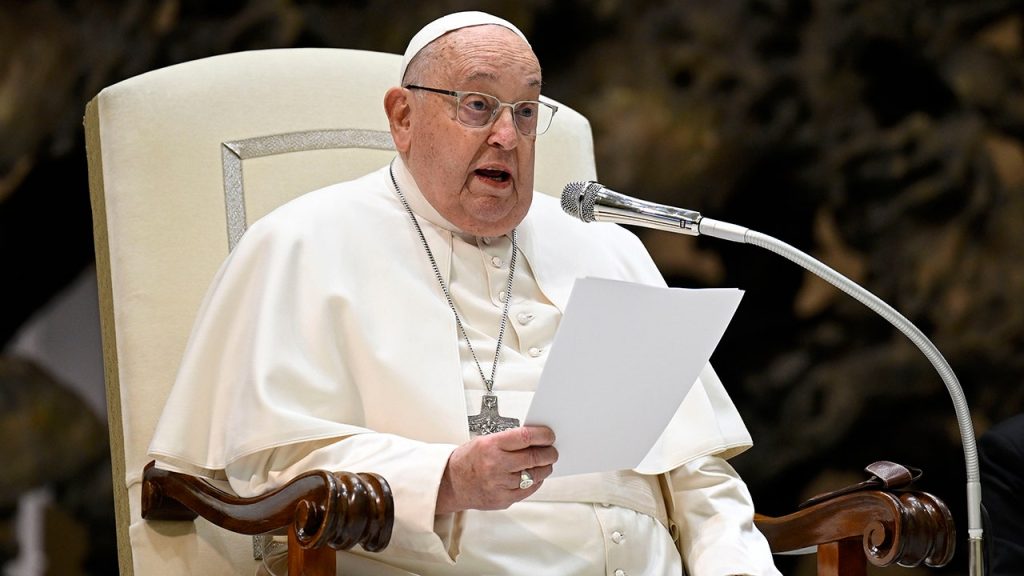Pope Francis remains in the hospital following a week-long battle with bilateral pneumonia, but recent updates regarding his health indicate a slight improvement. The 88-year-old pontiff, who was initially hospitalized for bronchitis, has shown no fever and stable blood test results, according to the Vatican. After receiving the Eucharist, he was able to read newspapers and engage in work from his hospital bed, reassuring many around the world about his condition.
| Article Subheadings |
|---|
| 1) Background on Pope Francis’ Health Issues |
| 2) Description of Current Medical Condition |
| 3) High-Profile Visits and Support |
| 4) Historical Context and Previous Health Challenges |
| 5) Recovery Outlook and Expectations |
Background on Pope Francis’ Health Issues
Pope Francis has had a history of health challenges, having undergone significant medical procedures throughout his life. As the 266th pope of the Roman Catholic Church, Francis was born Jorge Mario Bergoglio in Argentina in 1936 and has since struggled with various health problems. His recent hospitalization began on February 14, 2025, when he was admitted to Rome’s Gemelli Hospital due to bronchitis, which subsequently led to complications resulting in bilateral pneumonia. This particular health crisis has drawn widespread attention, not only because of the Pope’s prominent role but also due to his advanced age, sparking concern among the faithful and the global community.
Description of Current Medical Condition
As of the latest updates, Pope Francis is reported to be “slightly improving.” Over the past week, his condition has stabilized, with reports from the Vatican indicating that he currently has no fever and his blood tests remain stable. The Vatican’s official statement noted that he has been receiving antibiotic cortisone therapy due to a polymicrobial infection that developed from his bronchitis, complicating his treatment. These developments are crucial, as they outline the intricate nature of his health battle and illustrate the careful monitoring and medical intervention he is receiving to ensure a better recovery. The pontiff’s spirits appeared to be high as he engaged in light work while recovering from his illness.
High-Profile Visits and Support
In a display of solidarity and support, Italian Prime Minister Giorgia Meloni visited Pope Francis on February 17, 2025. During her visit, she described the Pope as “alert and responsive,” suggesting a positive attitude as he humorously interacted with her. Their meeting was emblematic of the collective concern for His Holiness’s health, further highlighting the Pope’s important role as both a spiritual leader and a public figure. Multiple visitors, including various religious and political leaders, have expressed their well-wishes for his recovery. Such visits not only provide emotional support to the Pope but also reinforce the connections between the Vatican and government leaders, demonstrating the significance of the Pope’s influence on global matters.
Historical Context and Previous Health Challenges
Pope Francis has faced numerous health challenges throughout his life, with respiratory issues being a recurrent concern. His medical history includes significant treatment for his lungs, as part of his lung was removed during a surgical procedure in his youth due to pleurisy. This continuing battle against respiratory ailments has made him susceptible to complications like pneumonia, particularly at his advanced age. Beyond respiratory issues, Pope Francis has also suffered falls, most recently in December and January, which prompted the precaution of using a sling for his arm. The combination of these experiences provides a context for his current health crisis and underscores the need for continual monitoring of his condition.
Recovery Outlook and Expectations
As the Pope continues his recovery, the Vatican has provided reassurances regarding his condition. Health experts emphasize the significance of his age and medical history in determining the best course for recovery. While there is hope for his continued improvement, his long-term health will require ongoing medical oversight. Observers express cautious optimism, understanding that the pontiff has faced health battles before and has shown resilience. The world watches closely as Pope Francis navigates this latest challenge, hoping for a swift recovery that will allow him to return to his responsibilities and continue his spiritual mission. His return will likely be celebrated by Catholics globally, reaffirming their faith in his leadership.
| No. | Key Points |
|---|---|
| 1 | Pope Francis is hospitalized for bilateral pneumonia after previously treating bronchitis. |
| 2 | The Vatican reports he is “slightly improving” with no fever and stable blood tests. |
| 3 | Italian Prime Minister Giorgia Meloni visited and reported he is alert and joking. |
| 4 | Pope Francis has a history of respiratory health issues, including lung surgery. |
| 5 | The recovery process will require careful monitoring due to his advanced age. |
Summary
The health of Pope Francis is under careful observation as he recuperates from pneumonia, a condition that has sparked global concern given his age and medical history. With positive developments in his treatment and visits from high-profile individuals indicating support from the public and leaders alike, the Vatican remains hopeful for his recovery. Pope Francis’s condition is a reminder of the challenges faced by world leaders, especially those in their later years, and the need for continued health vigilance.
Frequently Asked Questions
Question: What caused Pope Francis’s hospitalization?
Pope Francis was hospitalized due to bronchitis, which later developed into bilateral pneumonia.
Question: How is Pope Francis’s current health status?
He is currently reported to be slightly improving, with no fever and stable blood tests according to the Vatican.
Question: What prior health issues has Pope Francis experienced?
In addition to respiratory issues, he has undergone lung surgery and has experienced falls that required medical attention.


